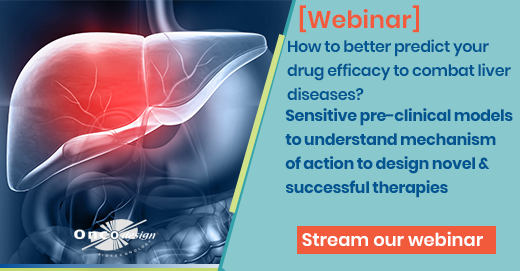


Samira Benhamouche-Trouillet , PhD
2 Juillet – 17h CEST
Liver pathologies account for significant burden of disease and costs, with more than 800 million people affected and a mortality rate of approximately 2 million deaths per year worldwide. Given the prevalence of obesity and diabetes mellitus worldwide, NAFLD will increasingly become the leading cause of chronic liver disease and hepatocellular carcinoma. For now, liver transplantation remains the only effective therapeutic option.
Acute liver injury is a syndrome of severe and abrupt hepatocyte injury and inflammation leading to liver failure. Many different etiologies have been identified, with acetaminophen (APAP) overdose and viral hepatitis being the most common causes. Chronic Liver diseases (CLD), irrespective of the etiology, are characterized by parenchymal injury, activation of inflammatory response, angiogenesis and sustained activation of liver fibrogenesis. Liver cirrhosis represent an advanced stage of CLD characterized by the formation of fibrotic septa surrounding regenerative nodules, changes in vascular architecture, portal hypertension and complications such as liver failure and hepatocellular carcinoma (HCC).
Providing palliative and curative solutions is an urgent necessity. At Oncodesign, we offer and develop both complementary and integrated strategies to mimic the different steps of liver diseases and cancer progression in mouse models, in order to develop novel therapies and elucidate the mechanisms of action.
Key learning objectives
- Introduction to liver pathogeneses
- Models of acute liver injury
- Models of liver fibrosis and NASH
- Models of liver cancer
Discover our speaker Samira Benhamouche-Trouillet
Samira Benhamouche-Trouillet is a study director at Oncodesign in the department of in vivo pharmacology.
She received her PhD in 2008 in biochemistry, cellular and molecular biology from Paris 11 University and Cochin institute (Paris, France) where she studied the role of Wnt/b-catenin signaling in liver homeostasis, regeneration and carcinogenesis. Then, for her postdoctoral training, she joined the Massachusetts General Hospital Cancer Center/ Harvard medical School (Boston, USA) from 2008 to 2013 to study the role of hepatic progenitor cells in cancer and mechanisms of biliary cells polarization and lumen formation during liver development. From 2013 to 2018, she was a group leader and assistant professor at Bordeaux University and Centre-Hepato-Biliaire (Paris area) where she worked on signal transduction pathways involved in lipid and glucose metabolism, NASH pathogenesis and in liver regeneration. In September 2018, she joined Oncodesign where she has been developing preclinical models for liver diseases and manages proof-of concept studies in inflammatory diseases and oncology.
